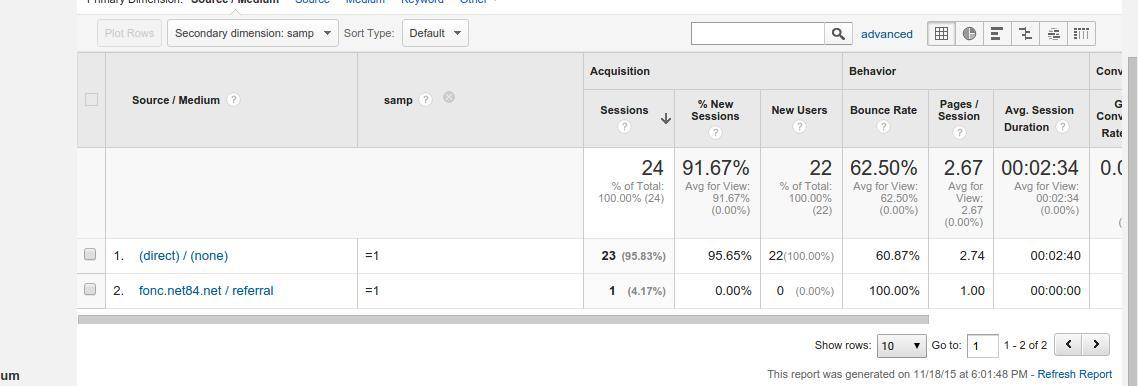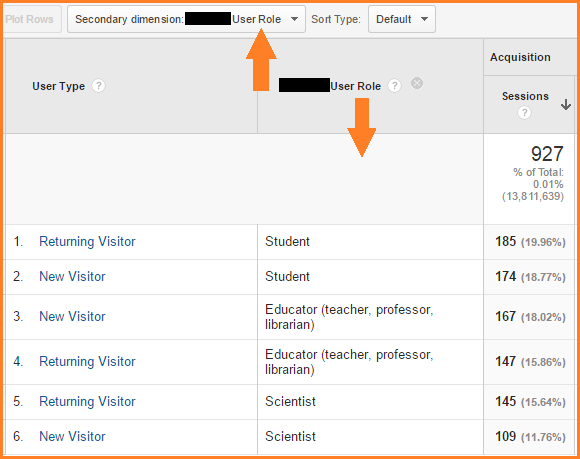Explained: The Role and Meaning of a 'Secondary Dimension' in Google Analytics
Navigating the Midst of Second Dimension in Google Analytics: An In-depth Expedition on Its Performance
Additional dimensions, though apparently uncomplicated at first look, nurture a wide range of untapped possible waiting to be harnessed. As we embark on this journey to check out the nuanced functionality of secondary dimensions, we will reveal how this attribute can light up patterns, reveal correlations, and inevitably lead the means for educated decision-making in the electronic landscape (what is a “secondary dimension” in google analytics?).
Comprehending Second Dimensions in Google Analytics

Comprehending how second measurements job is important for leveraging the full power of Google Analytics. These measurements help you address a lot more complex concerns concerning individual habits and the efficiency of your internet site content and advertising and marketing efforts. For example, you can use secondary dimensions to examine which browsers or devices are most frequently utilized by site visitors who make an acquisition, or to compare the bounce rates of various website traffic sources. By integrating main metrics with additional dimensions, you can obtain valuable insights that drive notified decision-making and optimization strategies - what is a “secondary dimension” in google analytics?.
Leveraging Secondary Dimensions for Data Evaluation
Building upon the foundational understanding of just how secondary dimensions enhance data analysis in Google Analytics, the application of these extra layers of info becomes extremely important in drawing out beneficial insights for educated decision-making and optimization approaches. By leveraging additional measurements, experts can dig deeper right into the efficiency metrics by including more context to the key dimensions, hence revealing concealed patterns and connections that may not appear at initial glance. This deeper degree of analysis allows companies to much better comprehend individual habits, determine patterns, and identify locations for enhancement.
Additionally, secondary dimensions supply a more thorough view of the data, permitting division based upon different parameters such as demographics, tools, website traffic resources, and much more. This division promotes a much more granular evaluation, enabling organizations to tailor their approaches and projects to specific audience segments for enhanced targeting and customization. In significance, the strategic use second dimensions empowers companies to make data-driven decisions that drive development and success in the digital landscape.
Advanced Methods for Second Dimension Execution
Checking out intricate techniques to harness the complete possibility of second measurements in Google Analytics boosts the depth and class of information evaluation for strategic decision-making. One advanced technique for executing second measurements is using customized dimensions. By specifying custom-made dimensions, customers can sector data additionally to obtain even more certain insights into customer habits, such as tracking interactions with details components on a web page or keeping track of the efficiency of a particular Find Out More marketing campaign. One more innovative technique is the use of regex (regular expressions) within secondary measurements. Regex permits more powerful and versatile pattern matching, allowing customers to develop complicated filters for data analysis. Furthermore, incorporating additional dimensions with innovative sectors can provide much more granular understandings by using multiple layers of division to the information. This technique allows for a deeper understanding of customer actions based on different requirements all at once. Carrying out these innovative methods for additional dimensions in Google Analytics encourages users to perform much more innovative analysis and make data-driven decisions with accuracy.
Interpreting Insights With Secondary Measurements
When interpreting insights with additional dimensions, it is necessary to consider the context of the data and how different measurements interact with each various other. Understanding which specific web traffic resources lead to higher conversion prices or determining which gadgets users favor for making purchases can provide workable insights for optimizing advertising campaigns and enhancing total website efficiency. By very carefully taking a look at the information with additional measurements in mind, services can make educated choices that drive significant outcomes and boost their digital existence.
Optimizing Efficiency With Additional Dimensions

One essential means to optimize performance with second measurements is by segmenting data more granularly. This permits you to isolate certain factors blog here that might be affecting your metrics and gain a far better understanding of what drives success or failure in your digital campaigns. By integrating second dimensions such as 'tool group' and 'landing page,' you can pinpoint which gadget kinds are most effective for particular touchdown web pages, enabling you to customize your strategies accordingly.
In addition, making use of second dimensions can help you identify trends, patterns, and correlations that may not appear when examining information with main measurements alone. This much deeper level of evaluation can lead to more educated decision-making and ultimately improve the general performance of your internet site or electronic advertising and marketing campaigns.
Final Thought
Finally, additional dimensions in Google Analytics play a critical duty in improving information analysis and providing much deeper insights into site efficiency. By using sophisticated strategies and translating the data effectively, companies can enhance their approaches and enhance total performance. Comprehending the capability of additional dimensions is important for making informed choices and driving success in the digital landscape.
By leveraging second measurements, experts can dig deeper right into the performance metrics by including even more context to the primary measurements, therefore discovering covert patterns and correlations that could not be noticeable at first look. One sophisticated technique for applying additional dimensions is the use of custom measurements.Having actually grasped advanced methods like customized dimensions and regex for second dimension application in Google Analytics, the following vital action is interpreting the important understandings acquired with these sophisticated data division approaches. Interpreting understandings with secondary dimensions entails evaluating the partnerships in between the additional and primary dimensions selected, uncovering patterns, fads, and correlations that might not be instantly obvious when looking at the information in its totality.When translating insights via second measurements, it is important to consider the context of the data and how different dimensions interact with each other.